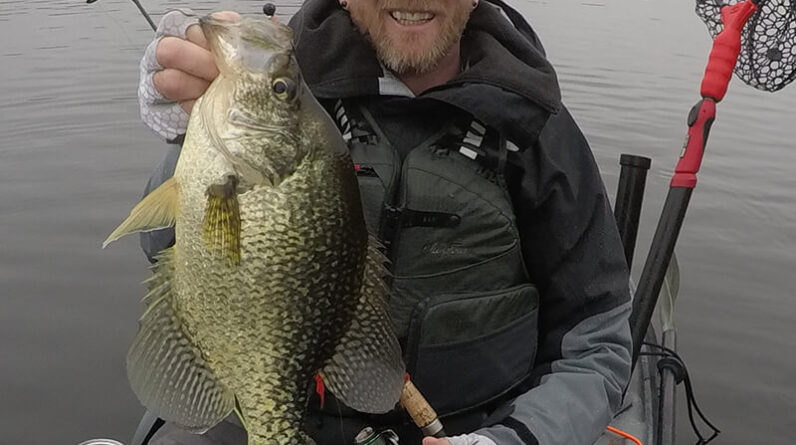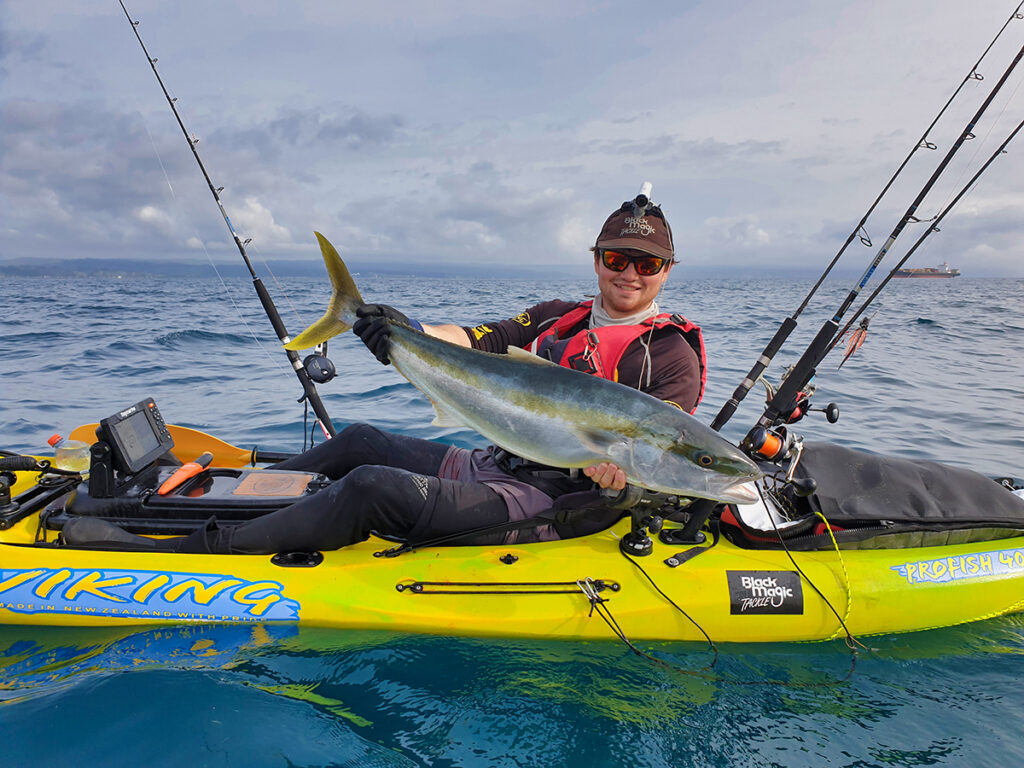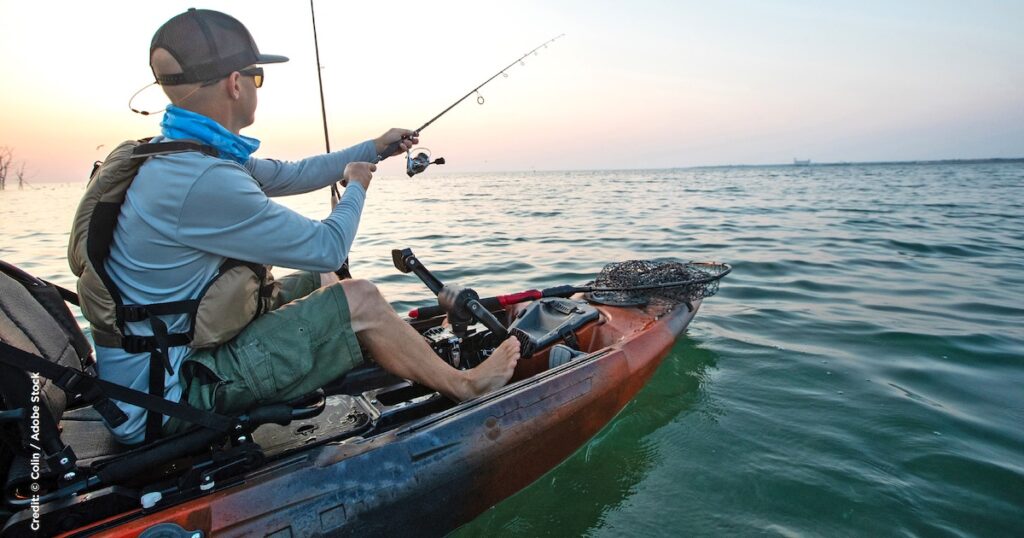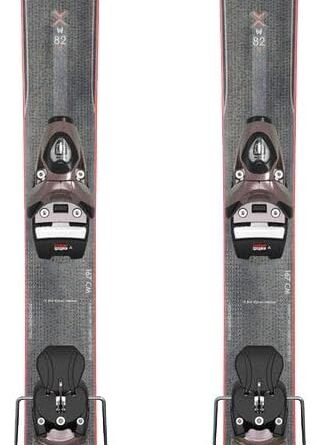
Are you an avid kayak fisherman in search of the perfect fishing line to enhance your angling experience? Look no further. This comprehensive guide will equip you with the knowledge you need to select the ideal fishing line for your kayak fishing adventures. Whether you’re a beginner or a seasoned pro, understanding the different types of fishing lines available and their specific characteristics will help you make an informed decision. So, let’s dive in and explore the world of fishing lines, so that you can make every fishing trip a memorable one.
Consideration Factors
When it comes to choosing the perfect fishing line for kayak fishing, there are several factors that you need to take into consideration. These factors can greatly affect your fishing experience and determine the success of your fishing trip. Let’s explore each consideration factor in more detail:
Fishing Location
The first consideration factor is the fishing location. Whether you are fishing in freshwater or saltwater can significantly impact the type of fishing line you should choose. Let’s take a closer look at each:
Freshwater Fishing
If you are planning to go kayak fishing in freshwater, you have a wide range of options when it comes to choosing a fishing line. Freshwater fishing lines are typically designed to be lightweight and have excellent knot strength. Monofilament lines are a popular choice for freshwater fishing as they offer good casting ability, high visibility, and can handle most freshwater fish species.
Saltwater Fishing
Saltwater fishing presents its own set of challenges, and therefore, requires a fishing line that is specifically designed to withstand the harsh conditions of the ocean. Saltwater fishing lines are generally more durable and resistant to corrosion. They are designed to handle heavy loads and have excellent abrasion resistance. Braided lines and fluorocarbon lines are commonly used in saltwater fishing due to their outstanding strength and durability.

This image is property of paddlingmagazine-images.s3.amazonaws.com.
Target Species
The next consideration factor is the target species. The type of fish you are targeting will determine the strength and characteristics required in your fishing line. Let’s explore the options for both freshwater and saltwater fish:
Freshwater Fish
When targeting freshwater fish, you typically have a wide variety of species to choose from, such as bass, trout, and panfish. For these fish, a monofilament fishing line with a medium-pound test is usually sufficient. Monofilament lines have good strength and flexibility, making them suitable for handling freshwater fish of various sizes.
Saltwater Fish
Saltwater fish species, on the other hand, are generally larger and more powerful. They require fishing lines with greater strength and durability. Braided lines are a popular choice for saltwater fishing, as they offer exceptional strength and can handle the demanding fight of saltwater game fish. However, if you are targeting more finicky saltwater species, such as bonefish or tarpon, a fluorocarbon line may be a better option due to its high visibility in water and its nearly invisible nature.
Fishing Technique
Your chosen fishing technique can greatly influence your choice of fishing line. Different techniques require different line characteristics to achieve optimal performance. Let’s take a look at some common fishing techniques:
Casting
Casting is a popular fishing technique that involves throwing a baited hook or lure into the water using a fishing rod. For casting, a fishing line with good flexibility and casting ability is essential. Monofilament lines are often preferred for casting as they provide excellent manageability and can be cast over long distances with relative ease.
Trolling
Trolling is a technique where you let your bait or lures drag behind your kayak as you slowly move forward. This technique requires a fishing line that can withstand the constant pressure of the trolling speed. Braided lines are often the top choice for trolling as they offer exceptional strength and abrasion resistance.
Bottom Fishing
Bottom fishing involves dropping your bait or lures to the bottom of the water and waiting for fish to bite. This technique requires a fishing line with good sensitivity to detect the subtle nibbles from bottom-dwelling fish. Monofilament lines are commonly used for bottom fishing as they provide good sensitivity and allow you to feel even the slightest bites.
Fly Fishing
Fly fishing is a unique technique that involves casting a lightweight fly using a special fly fishing rod and reel. When it comes to fly fishing, the fishing line plays a crucial role in delivering the fly accurately and delicately. Specialized fly lines, which are typically made of braided cores with a PVC coating, are specifically designed for fly fishing to achieve precise and controlled casts.

This image is property of oldtownwatercraft.johnsonoutdoors.com.
Visibility in Water
The visibility of your fishing line in the water can have a significant impact on your fishing success. The visibility of your line depends on various factors, such as its color and material. Let’s explore the options for increased visibility in water:
Clear Line
Clear fishing lines are popular for their low visibility in water. They are often preferred when fishing in clear or heavily fished waters where fish may be more easily spooked. Clear lines are also ideal for anglers who prefer a more stealthy approach and want to reduce the chance of fish detecting the line.
Colored Line
Colored fishing lines, on the other hand, offer increased visibility, making it easier for you to detect subtle line movements and bites. Colored lines are especially beneficial when fishing in low-light conditions or murky waters where clear lines may become difficult to see. They also come in a wide range of colors to suit various fishing situations and personal preferences.
Fluorocarbon Line
Fluorocarbon lines are known for their remarkable invisibility in water. They have a refractive index that is similar to water, making them nearly invisible to fish. Fluorocarbon lines are a popular choice for anglers who want the benefits of low visibility combined with the strength and sensitivity of a high-quality fishing line.
Line Strength
The strength of your fishing line is crucial to ensure you can handle the fish you hook without getting snapped or broken. Fishing lines are rated by their pound test, which refers to the amount of weight the line can withstand before breaking. Additionally, you have the option to choose between braid and monofilament lines, each with its own characteristics:
Pound Test
The pound test rating indicates the maximum weight the fishing line can handle. Higher pound test lines are generally stronger and more suitable for larger fish species. However, it’s important to consider the type of fish you will be targeting and the fishing conditions. Choosing a line with a pound test that matches your target species will ensure you have the strength needed to land those fish.
Braid vs. Monofilament
Braided lines are made by weaving together several strands of fibers, such as Spectra or Dyneema, resulting in a high-strength fishing line. Braid lines offer exceptional strength-to-diameter ratios, making them thinner yet significantly stronger than monofilament lines of the same pound test. They have low stretch, high sensitivity, and excellent abrasion resistance, making them suitable for targeting larger fish that require a strong and durable line.
Monofilament lines, on the other hand, are made from a single strand of nylon or other materials. They offer good knot strength, flexibility, and can handle most freshwater fish species. Monofilament lines have some stretch, which can be beneficial when fighting powerful and aggressive fish, as it helps absorb the shock and reduce the risk of line breakage.
Your choice between braid and monofilament lines will depend on your target species, fishing technique, and personal preferences. Understanding the characteristics of each type of line will help you make an informed decision.

This image is property of media.wired2fish.com.
Abrasion Resistance
Abrasion resistance is an essential factor to consider, especially when fishing in rugged or structure-filled environments. Abrasion-resistant lines can withstand contact with rocks, coral, or other underwater structures without breaking or becoming damaged. Let’s explore the options for abrasion-resistant lines:
Monofilament Line
Monofilament lines, due to their flexibility and stretch, generally have good abrasion resistance. They can withstand the challenges of fishing in rough environments, making them suitable for targeting fish near rocky areas, submerged trees, or other underwater structures.
Braided Line
Braided lines are known for their exceptional strength and durability, making them highly resistant to abrasion. The tightly woven fibers in braided lines make them less prone to damage from contact with underwater structures. If you are planning to fish in areas with sharp rocks or dense structure, a braided line can provide the necessary abrasion resistance.
Knot Strength
The strength of your fishing knots is crucial for securing your hook or lure to the fishing line. Weak knots can result in lost fish and frustration. Let’s explore the options for knot strength:
Monofilament Line
Monofilament lines are known for their good knot strength. They offer excellent knot security, making it easier to tie strong and reliable knots. Monofilament lines are generally more forgiving and easier to work with when tying knots, making them ideal for anglers who are new to fishing or prefer a line that is easier to manipulate.
Braided Line
Braided lines, although incredibly strong, can be more challenging to tie knots with due to their minimal stretch and smooth texture. However, once properly tied, the knots in braided lines offer exceptional strength and security. Taking the time to learn and practice tying strong knots with braided lines will ensure your tackle remains secure and your fishing experience is successful.

This image is property of www.blackmagictackle.com.
Line Diameter
The diameter of your fishing line can have various implications on your fishing experience. Let’s explore the options for line diameter:
Monofilament Line
Monofilament lines generally have a larger diameter compared to braided lines of the same pound test. This larger diameter can have advantages and disadvantages. A larger diameter line may offer increased visibility in water, making it easier for you to detect line movements and bites. It can also provide better knot security due to the increased surface area for knot contact.
Braided Line
Braided lines, on the other hand, have a smaller diameter compared to monofilament lines of the same pound test. This smaller diameter offers several advantages, such as increased line capacity on your reel and improved casting distance. The thin diameter of braided lines also reduces drag in the water, allowing your lures or baits to sink faster and facilitating a more natural presentation.
Fluorocarbon Line
Fluorocarbon lines have a similar diameter to monofilament lines of the same pound test. However, due to their refractive index that closely matches water, fluorocarbon lines appear virtually invisible underwater. This invisible nature can be advantageous when fishing in clear waters or when targeting finicky fish species that may be easily spooked by visible lines.
Conclusion
Choosing the perfect fishing line for your kayak fishing adventures requires careful consideration of various factors. Understanding the fishing location, target species, fishing technique, visibility in water, line strength, abrasion resistance, knot strength, line diameter, and budget will help you make an informed decision. Remember, the key is to select a fishing line that suits your specific needs and preferences while providing the strength and durability required to land your target fish successfully. Happy fishing!

This image is property of islandfishermanmagazine.com.






